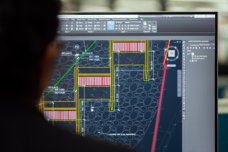Publication date: 14-02-2024, Read time: 2 min
We've discussed in another article some of the ways that UAVs can be used in smart agriculture. In this article, we'll talk about some of the different data collection sensors that can go on UAVs.
- Optical RGB. RGB (Red, Green, and Blue) sensors are the easy-access way – both financially and functionally – of getting high-resolution images. As these sensors don’t provide spectral data from the non-visible part of the spectrum, they are not suitable for all vegetation index measurements.
- Multispectral. Multispectral imaging sensors have higher spectral resolutions than RGB sensors. Today’s multispectral sensors can even be carried on lightweight UAVs.
- Hyperspectral. More and more hyperspectral sensors are now also made light-weight enough to be carried by drones. These cameras are used for similar purposes as multispectral sensors. They cover a larger range of the spectrum but normally achieve lower spatial resolution.
- Thermal. Thermal UAV remote sensing has been successfully used for various purposes in smart agriculture. Thermal cameras can also help to identify crop damage from harmful events such as fires.
- LiDAR. UAVs equipped with LiDAR (Light Detection and Ranging using laser light) are very good at measuring 3D vertical structures. The great benefit of LiDAR is its sensitivity to both green and non-green plant components.
If you’d like to learn more about this topic, check out this Geoversity course on UAVs in Precision Agriculture
Last edited: 08-05-2024






